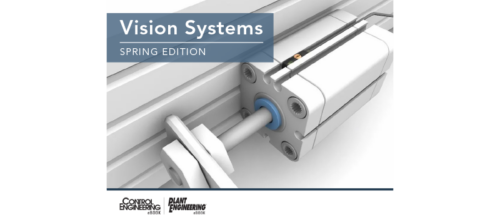GM benefits from automation system unification
A family approach to automation software and hardware is expected to make a major equipment manufacturer's products more durable and economical, while conserving energy, augmenting features, lowering costs, and easing integration of complex systems. Three levels of systems will be spread over multiple lines and models of machines, also adding safety and improving lifecycle cos...
A family approach to automation software and hardware is expected to make a major equipment manufacturer’s products more durable and economical, while conserving energy, augmenting features, lowering costs, and easing integration of complex systems. Three levels of systems will be spread over multiple lines and models of machines, also adding safety and improving lifecycle costs of maintenance and troubleshooting. No matter what industry you’re in, you’ll likely see some of these machines daily. Among them are 18, General Motors ( www.gm.com ), 2006 model-year-vehicle targets for the new GM Powertrain ( www.gmpowertrain.com ) family of control systems. GM’s Powertrain Controls business has about 650 computer-system and software engineers at the company’s proving grounds located here. They developed three engine and two transmission control systems for GM’s portfolio of engines, transmissions, and hybrid propulsion systems.
After the early August announcement of the new engine and transmission control system (to be applied across the majority of GM’s vehicle lineup), Control Engineering asked Dennis Bogden, director of GM Powertrain Electronics Engineering, about the changes. “For as many products as we produce, historically, we haven’t had much economy of scale across engine and transmission control systems.” Pooling efforts and expertise, the engineering teams employ more powerful digital processors, in real-time. “Shake and bake,” advanced-lifecycle testing shows that some of the new systems extend durability to two to three times the required 15-year life, Bogden said. The family strategy enables engineers to apply standard manufacturing and service procedures across the board, as well as quickly upgrade technology without disturbing other parts that will remain static. The new systems reduce design and test workload, simplify powertrain portfolio planning, and facilitate global volume sourcing.
Rich Taylor, executive director, Powertrain Electronics and Integration, explained about greater engineering challenges in a written statement, saying, “The new family approach enables greater software and component reuse to help reduce costs and improve quality. We also will be able to move to market more quickly and can focus our efforts more sharply on innovation and new technology.” Powertrain control modules manage such functions as fuel, throttle, ignition, emissions, shifting, and integrated functions, such as trailer/towing modes, traction and stability control, air conditioning, antitheft systems, driver display information, speed/tachometer and more. Engineers will combine various activators and sensors to customize the systems to each model’s performance needs. The controllers also can be used in GM’s specialty vehicles. The first-level control system handles the least complex engines and will begin to roll out in the 2007 model year. The mid-level system features the E38 32-bit engine- controller and covers engines with features such as variable valve timing or displacement on demand, like the new 3.5L and 3.9L V-6 found in 2006 Chevrolet Impala and Monte Carlo. The top system uses the E67, 32-bit engine controller and handles GM’s most sophisticated engines, such as the 4.4L Northstar V-8 SC of the Cadillac STS-V and XLR-V.
Hardware and software groups at Powertrain Controls collaborate with each other and with suppliers to write product requirements, purchase components, and design the final product. The group created constant parameters within a controller family as it moves from one supplier to the next. These consolidated processes apply across functions and help maintain quality control, the company said. GM writes the software for the three new systems and uses one common software package that’s tuned to each application and uses standard interfacing with the controller hardware. Eric H. Gassenfeit, information officer, Global Powertrain, noted, “By collaborating with powertrain electronics and integration on their software build processes, the information technology team was able to create an IT environment that significantly improved software build time while simultaneously lowering infrastructure and support costs.” On the hardware side, the family strategy has led to identical packaging and mounting of each controller and the corresponding connectors in most GM vehicles. Computing power onboard vehicles, like in other machines, has increased dramatically. GM’s first computers went into vehicles in 1979 to meet U.S. emissions standards; the first one managed six functions. Today’s computers are 56 times faster than the originals and control more than 100 functions, GM said.
Virtual and real sensors
The three-part approach offers common system and design skills, providing a small, medium, and large feature set, first for gasoline engine management, Bogden explained. Virtual sensors create new measurements by analyzing existing ones, especially in locations where putting a sensor is difficult or impractical, he says, including for torque and ethanol measurements. Other project elements include CAN for the onboard network, cam phasers for engine control, super charging, multiple switching for oxygen sensors, closed-loop heater control, temperature measurement for exhaust, mass airflow, manifold pressure, knock detection, crank-position and speed misfire detection, cam position measurements with electronic encoders, electronic throttle control system drive-by-wire, throttle blade detection, and oil pressure measurements for clutches and transmission.
GM suppliers for onboard automation, controls, and instrumentation include: for controllers Delphi and Hitachi; for sensors and actuators, Bosch, Delphi, Denso, Honeywell, NGK, Siemens, and others; for microprocessors, Freescale Semiconductor; and for test equipment, Etas, Lauterbach, and dSpace. Powertrain Controls group has received 197 patents in the past 10 years, GM noted.
Do you have experience and expertise with the topics mentioned in this content? You should consider contributing to our CFE Media editorial team and getting the recognition you and your company deserve. Click here to start this process.


